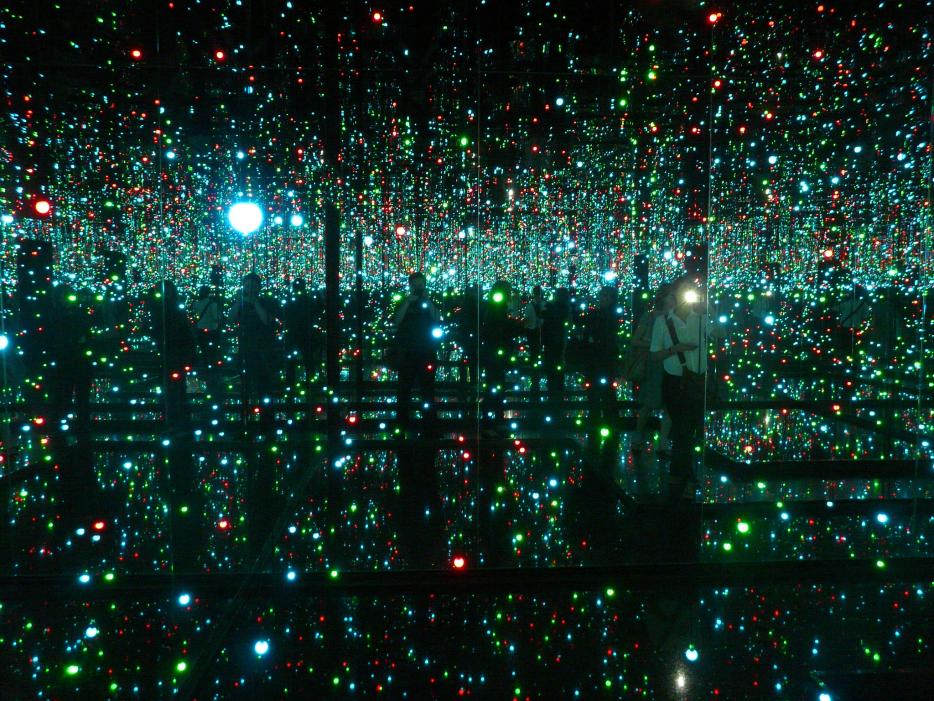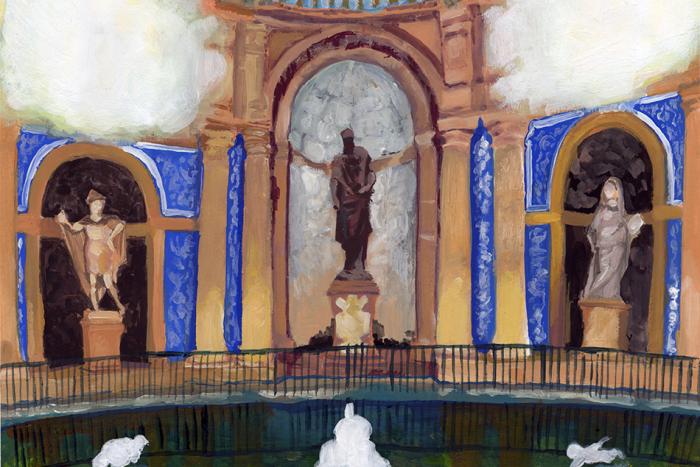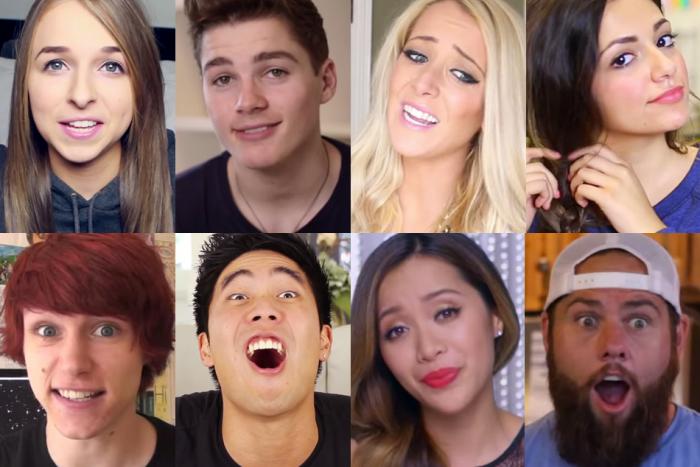Sarah Thornton’s surveys of the art world bring together incisive observations about artists, curators, and critics, with a holistic approach that yields unexpected connections between them. Thornton is equally skilled at placing an artist’s into a political or economic context as she is in capturing the everyday rhythms of their life. She divided her 2009 book Seven Days in the Art World into seven parts, each focusing on a different aspect of art—critics, schools, galleries, et cetera. Her new book, 33 Artists in 3 Acts, illuminates a different aspect of this world, going further into the lives of artists, sometimes surveying them over several years, and showing their interactions, rivalries, and partnerships.
This time, she’s broken the book into three parts: “Politics,” “Kinship,” and “Craft.” In each, Thornton moves back and forth across a group of artists, positioning them along a spectrum on a host of issues. These interviews were conducted over a period of several years, and certain themes and motifs emerge: artists ponder the emergence of the Occupy movement, and those based in New York find their own work under physical attack from the flooding caused by Superstorm Sandy. At the center of “Kinship” are the married artists Laurie Simmons and Carroll Dunham, and in the background of the interviews with them, readers will note the rise of their daughter Lena from independent filmmaker to Emmy-winning television creator.
I met up with Thornton at a sprawling coffee shop and eatery in lower Manhattan in November. Earlier that month, she had taken part in an event at the New Museum with Andrea Fraser, Massimiliano Gioni, and Simmons. Soon enough, her book tour would take her elsewhere in the country, and she lamented the fact that her schedule didn’t allow any time to take in the city’s museums or galleries on this particular visit. A condensed and edited version of our conversation follows.
*
The interviews in the book take place over the course of several years. Where did the idea to structure it in that particular way come from?
I was trained as an academic, and sometimes, academic forms of research have become the blueprint for how I go about things, even though hopefully when you’re reading the book that’s not overwhelmingly important. I hope it’s much more readable, and there isn’t the burden of that rigor in the final product.
So I had it in my head that I had to interview a hundred different artists to get a sense of the fields, and it was after interviewing that initial hundred that I came up with the structure and themes of the book. I decided I wanted some recurring artists, some recurring characters, because that way I could follow them over time and you could see their thought processes evolving somewhat over the course of the interviews—and also, the opportunity to revisit some of the questions and see what’s going on in their lives.
It was really in summer 2012 that I came up with this structure of having a couple of antagonists who were foils for each other who are kind of occupying opposite poles on a particular theme—in the case of politics, Ai Weiwei and Jeff Koons—and then dropping in other artists to complicate the overall pattern.
I could never explain that in a book proposal. So I have always worked this way. I basically write a good chunk of the book and then retrospectively write a proposal and submit it—when I put in the proposal, I’d already written all of Act One. And similarly, with Seven Days In the Art World, I’d written a good two-thirds of that book before I’d submitted it. I find proposals very stressful, and I like just doing it and achieving it rather than saying I’m going to do something.
How did you narrow the structure down to those three categories—Politics, Kinship, and Craft?
Well, it’s funny, because when I’d done that initial batch of interviews, I spent a week wading through transcripts, and those were the themes that rose to the surface. They’re very much the themes that define the border between an artist and what’s not an artist in ideological terms—how people in the field see it. So are you an artist, or are you a politician, activist, didactic illustrator? That is a distinction made within the art world. Similarly, are you an artist or are you a craftsman? Are there really concepts behind this painting, or are you just working in a time-honored tradition with paint? And kinship, perhaps a little more complicatedly—and this shifts with generations, but gender’s long been an issue for women artists’ ability to command credibility—can be a problem: Are you a wife, mother, and hobbyist? Or are you really an artist? And the whole problem of being taken seriously is a theme that runs through the book, but kinship issues can bloom large.
Also, these are themes I think are universal themes in a way that take contemporary art beyond the ghetto of art. I have a friend who’s a psychotherapist who doesn’t think—or didn’t think—he liked contemporary art. It was like a luxury gift for the one percent. And because he’s a friend of mine, he read the book, and he’s like, “I couldn’t believe how interesting this art was.” When you’re looking into issues of freedom of speech and human rights and ethics, in relation to people like Ai Weiwei or Eugenio Dittborn or Gabriel Orozco, it opens up an avenue into work that at first might seem inaccessible.
Something that comes up in the Politics section is the fact that some of these artists either are working in dictatorships or totalitarian states or have memories of themselves or their families making art under those conditions. Do you see that being something that’s going to continue, where 20 years from now we’ll see artists emerging from societies going through that right now?
I mean, the one part of the world where there is very little art production in our terms, like contemporary art, is Africa. And obviously that’s not true of South Africa or the Arab countries at the very north of Africa. But Wangetchi Mutu, who is Kenyan-born but lives in Brooklyn, talks about how in her mother tongue, Kikuyu, there is no word for artist. The closest word is something like “magician,” or “someone who imbues objects with power.”
And so she sees contemporary art as a bit of a foreign import—contemporary art in the western incarnation. So I think you can probably relate it to a society’s relationship to capitalism and democracy or not. Ai Weiwei’s definition of an artist is that he or she is an enemy of general sensibilities, which is a pretty old-school avant-garde definition. It’s kind of hard to hang on to that definition here in New York, but it makes sense in a place where they don’t have freedom of speech or democracy. That definition, which we might associate with the 19th-century avant-garde, still works in that national context. So I am very interested in the geographical differences and in terms of the way this role is customized.
I feel like also there’s a generational aspect of art making that comes up. It’s very present in the first section, and in the second section, you see the rise of Lena Dunham. What was it like doing the research for this and seeing this happen in the background?
Well, it’s had a huge impact on her artist parents, who are my subjects. It was very hard for me to find an artist couple I could work with really well; first of all, it was hard to find an artist couple with comparable levels of recognition. So often, one is in the shadow of the other, and I didn’t want that. That wasn’t my ideal for the book. I interviewed one couple of artists who refused to be interviewed together, only apart, and another artist couple who wanted to be interviewed only together and not apart.
Tip [Carroll Dunham] and Laurie were really open. They’d read Seven Days in the Art World and liked it. They knew where I was coming from. Laurie convinced Tip, and he just dove in and loved my questions. I walked back in after having not talked to them for about six months and he’d be answering a question I’d asked him in a previous interview.
There's the misperception on the part of the general public that artists have to do it all themselves. It’s getting a little tiresome. For me, an artist is like an architect of ideas. You don’t expect an architect to lay every brick, or even know how to brick lay all that well, and it’s the same with contemporary artists. There’s often a real care for the execution of the work, and that’s about finding the right craftsperson to do it.
At first, I didn’t really pay much notice to Lena. I just thought it was interesting because they had kids, and so many women of Laurie’s generation chose not to have children because they did not think it was possible for them to be both an artist and a mother. Marina Abramovic is very explicit about that. Cindy Sherman also doesn’t have children. Beatriz Milhazes, no children. Yayoi Kusama, an even older generation, no children. Most of those artists over the age of about 55 did not feel they could do both. Laurie was exceptional in that regard.
And so I was taking notes about the kids and their involvement, and frankly, almost every time I interviewed them, the kids would call or they’d be in another room. They’d pop in or they’d be in the building somewhere having a nap, or they’d float through. I met them. And one of the themes I was really interested in is the relationship between Tip and Laurie and when they felt competitive, how they weathered—I’m really interested in self-belief and how artists step up and declare themselves an artist and command authority and all of that kind of thing.
So I was really curious as to how that would happen with two people doing the same thing. I mean, thankfully, in different fields, because I think if they were both painters they might have a problem. But he’s a painter. She starts out as a photographer and also makes video and proliferates different kinds of multimedia projects, but never paints. So they at least have their domains.
When I chose my recurring artists, I was interested to see them evolve over time. It was possible to exude Lena’s story from their story, [but] then I decided, actually, I’m going to interview the daughters. So I interviewed Lena and Grace about being the children of artists, growing up in a Brooklyn artist community, and their views on how it affected their sense of self and creativity and stuff like that.
Grace is particularly articulate in mapping out the kind of values and prejudices of the Brooklyn art scene. And it’s great, because sometimes artists don’t want to fess up to some of those things and she nails some of the value judgments.
In terms of other sorts of things that took place over the course of the interviews, you briefly have Sandy showing up and flooding certain art spaces. Towards the end of the book, you have Occupy. I’m also curious, because in 2012, you wrote about, if I’m getting this right...
My top 10 reasons for not reporting on the art market. I mean, buying and selling art is part of the life of art, and has been for many years. I actually love art objects, you know? I have nothing against their trade. But as a writer, I really burnt out about writing about the market.
I think it’s really important that there be in-depth investigative pieces that expose some of the manipulation that goes on with the auction houses and expose some of the absurdities of the marketplace. I tried to do that. I wrote that piece when I was trying to clear my head to write 33 Artists in 3 Acts. So it was a little bit of an emotional blowing off of steam, and a kind of clearing the slate. The market comes up here and there, but I don’t tackle it head-on until Act Three, Craft, and that’s partly because I didn’t want it to be in the foreground. The market talks so loudly and prices drowned out other meanings. It was very self-conscious that I would leave that until the end of the book. I didn’t want you to have to be tripping over it.
I mean, Koons is always talked about in relation to the market. I put him in the Politics Act because I thought it was a much more interesting filter through which to look at him and his work. I included the market in the Craft section because my definition of “craft” is very broad—it’s about all the skills required to be a contemporary artist today. You know, probably the minority of contemporary artists, in the conceptual sense of the word, know how to do life drawing—a very small minority, actually. I’m a defender of that, in a way. I think that there’s the misperception on the part of the general public that artists have to do it all themselves. It’s getting a little tiresome. For me, an artist is like an architect of ideas. You don’t expect an architect to lay every brick, or even know how to brick lay all that well, and it’s the same with contemporary artists. There’s often a real care for the execution of the work, and that’s about finding the right craftsperson to do it.
In the Martha Rosler section, she brings up the question of outsider art. Is that a subject that you are looking to address more in the future?
Outsider art is a theme that runs through Act Two as well, because Maurizio Cattelan and Tip and Laurie are fans of outsider art. And actually, as it happens, own a few pieces by the same outsider artist, who happened to be shown at Venice in the very final scene of Act Two. It’s very interesting to me. The whole label, outsider artist, suggests to me that professional artists should just be called insider artists. And what intrigues me is the outsider artists can get away with things that insider artists can no longer get away with. So an outsider artist is often revered for the authentic self-expression that downpours onto the canvas.
Insider artists are seen as very uncool if they adopt that strategy, whereas it’s exactly what’s expected of an outsider artist. And so it intrigues me that actually a lot of the art world loves that, including artists, but it’s displaced into this other terrain where it’s okay. And so I do kind of touch upon that in the Kinship section. The book is very much about professional artists, and even the artists who teach, who don’t make a living from their work, they’re still insiders, because I include the art schools in the system.
You did in Seven Days in the Art World as well.
The art schools are absolutely part and parcel of the dominant discourse that circulates.
In the Yayoi Kusama section, you talked about being incredibly moved by one piece of hers. I was struck by that, because it was one of the few places where you didn’t write neutrally about a work of art.
I know. I couldn’t help it, actually, because I love art and I have my own emotional reactions and I do, like a classically trained ethnographer, keep them at bay. I think too much of the conversation around art is about whether you like it or not. I actually think whether I like it or not is not the most interesting question. But Kusama infinity rooms invariably make me cry. I don’t know what it is about that work—the first time I saw one was a very particular point in my life. I think I’m also a third-generation atheist who’s never had a belief in God, however much I kind of willed myself to be an agnostic, which I think is a more generous position to be in. You either believe or you don’t. But there’s something about those rooms. They do have this kind of God-like sense of awesome sublimity which blows me away.
In the acknowledgements, you talk a little bit about Calvin Tomkins. When you’re not working—when you’re reading, do you generally read mostly other writers who focus on art?
I’m a big fan of his 1965 book The Bride and the Bachelors, which was looking at the legacy of Duchamp and talked about John Cage and Merce Cunningham. That was one of the most important books I read as an art history student. So I think I was thinking of that. Also, his biography of Duchamp is obviously very important to me. This book is about the legacy of Duchamp. I even start out with a quote from Duchamp that came from one of his interviews. I felt like my understanding of Duchamp very much had come to me through Tomkins, and I felt like it was important to credit that.
Actually, 33 Artists in 3 Acts very much benefits from being read in order. It’s not a magazine, and if you treat it like a magazine, it will probably be no more wonderful than a magazine. That’s why I organized the table of contents in a way that you only get one page number. Start at the beginning of that Act and read it through and please don’t skip through and just read about Jeff Koons.
A friend of mine with an art history background had read Seven Days in the Art World and had very good things to say about it, which is how I first came to read your work. I’m curious, though—I’m a reader without much formal training in art who reads your work, but I also know plenty of people with more of a formal background who read your work as well. How do you balance writing for both audiences?
I care about both audiences very much. I think the benefit for outsiders is that it’s a good read. You’ll read about works of art that you wouldn’t have otherwise read about. You’ll be behind the scenes with a lot of the big names, and also some names you never would have heard of but won’t regret learning about, and you’ll learn a lot about contemporary art. At the end of the day, you’ll kind of understand what a contemporary artist is, how they’re playing their game, some of the geographical and national differences, some gender differences. You’ll really have a sense of the terrain. It can be a primer for you. You can get it.
There’s a whole financial world which now sees art as an alternative asset and is a hedge against currency fluctuations and all sorts of other forms of investment. That brings a lot of wealth to the art world, and it does mean there are probably more people making a living through art than at any time in history. It doesn’t mean it’s not weird.
With regard to insiders in the art world, very few people will have been in all of these artists’ studios. Even Ai Weiwei’s dealer will not have been with Kusama. He or she won’t have been with Koons. And I think, too, that one of the things I do as a kind of social commentator or cultural commentator in the art world is say things that others wouldn’t say or wouldn’t want to say. There’s a lot of mystification around artists, and so there’s a lot that doesn’t get said about how they play their game, how they’re built up.
And so one of the ways in which I break ranks with the art world is that my definition of the work is quite different from their definition of the work. They see the work as everything inside the frame and they’d rather people didn’t talk about anything else because you can disrupt the mechanisms. You can disrupt marketing by pointing at marketing, you know what I mean? And so I insist on defining an artist’s work as everything they do. And the interesting thing is that all the artists in the book, particularly those with high recognition, agree with me. They admit that’s true.
You can’t explain the success of some artists versus the obscurity of other artists without recourse to work in the broadest sense of the term, because inanimate objects don’t walk into museums, you know? And there is so much art out there. Art requires myths and backstories in order to become salient, and the work is still incredibly important. You can say it’s the dominant communication that comes out of an artist’s studio, but there’s a lot of other stuff, you know? The artist’s talk is a key modus operandi—it’s like politicians holding babies. It’s part of their job. And so I think that there might be a little bit of uncomfortable self-consciousness brought about in very upper-level insider readers, but I think also for art history students and studio art students, this could be hugely useful.
Do you have a sense of, thematically, what you want your next work to cover?
No. Seven Days in the Art World came out in autumn 2008, and it took me until summer of 2009 to come up with the idea for this book. I have loads of ideas and loads of possibilities, but I’m also just… I would hope by next summer I would have my fingers into something that could be the next project, but right now I’m just living and breathing this book.
One last question. A lot of the sections discussing Brooklyn-based artists are set in Bushwick, which is becoming one of the most expensive neighborhoods in New York. Obviously I feel like the gentrification of neighborhoods and artists playing a role in that is kind of a long-running theme, but do you feel like what’s happening there now is any different than what happened in Tribeca decades ago?
I mean, I’m not a New Yorker and I don’t live in Brooklyn, but it looks to me very similar. Artists bring kudos to neighborhoods and coolness, and if you don’t get in there quickly with some rent control, you’re out, you know? I don’t know how to get around that.
It’s a great frustration to people, to writers, because we don’t make the money they make. Unless you’re writing genre fiction or very lucky, there’s no way you can make that. And it is kind of weird that artists can become incredibly wealthy, too. That is fairly new, you know, and has been increasing since the ’80s. It intrigues me that at this time of digitization, where so much culture is disappearing into thin air, out of a smart phone or whatever, that there is this move to these physical objects. I mean, I think there’s a lot going on there. I think it’s actually quite satisfying. We’re going to have bodies forever, probably, and it is kind of satisfying to interact with physical things at scale.
And by the same token, it’s intriguing that there’s a whole financial world which now sees art as an alternative asset and is a hedge against currency fluctuations and all sorts of other forms of investment. That brings a lot of wealth to the art world, and it does mean there are probably more people making a living through art than at any time in history. It doesn’t mean it’s not weird.






